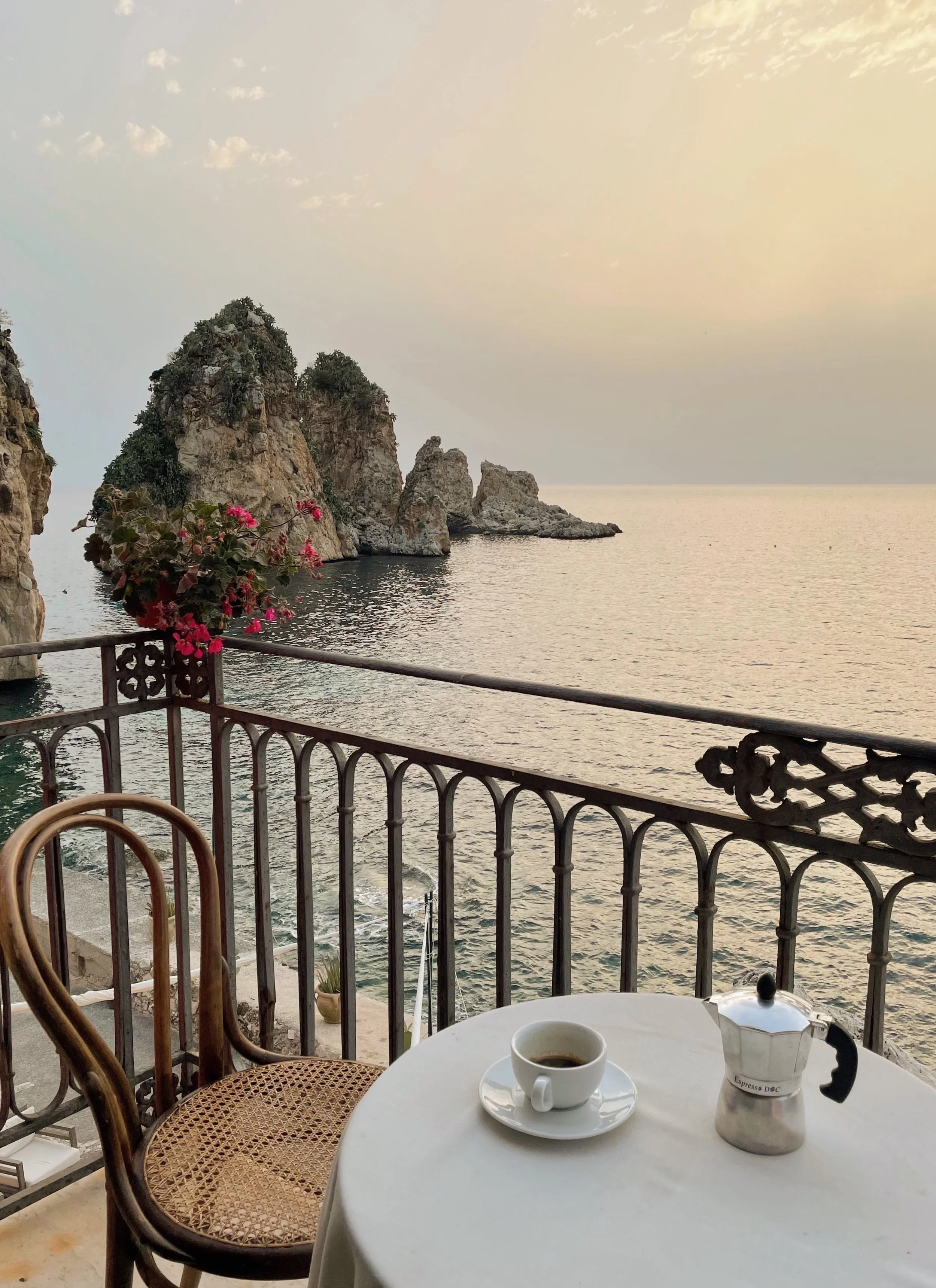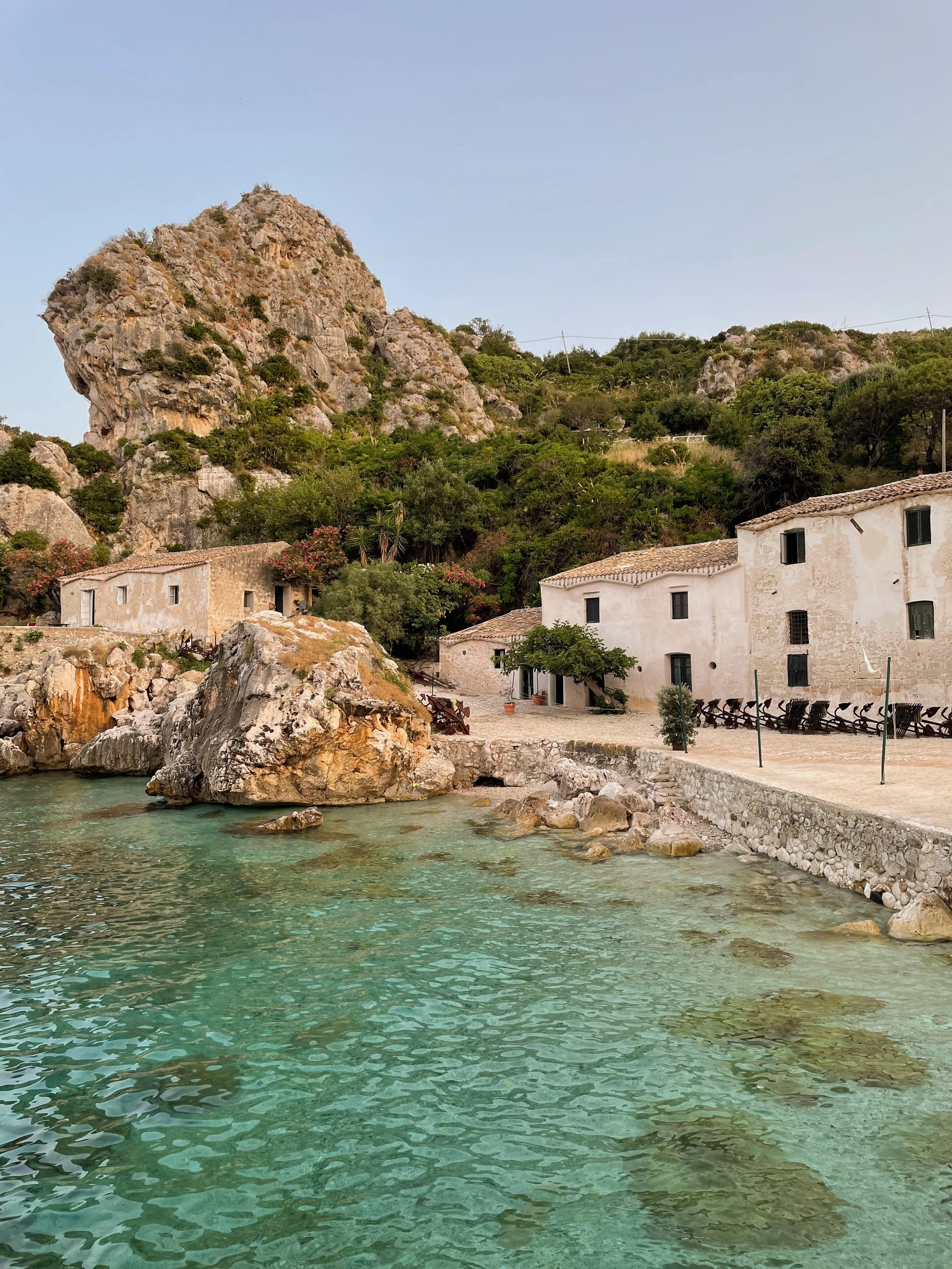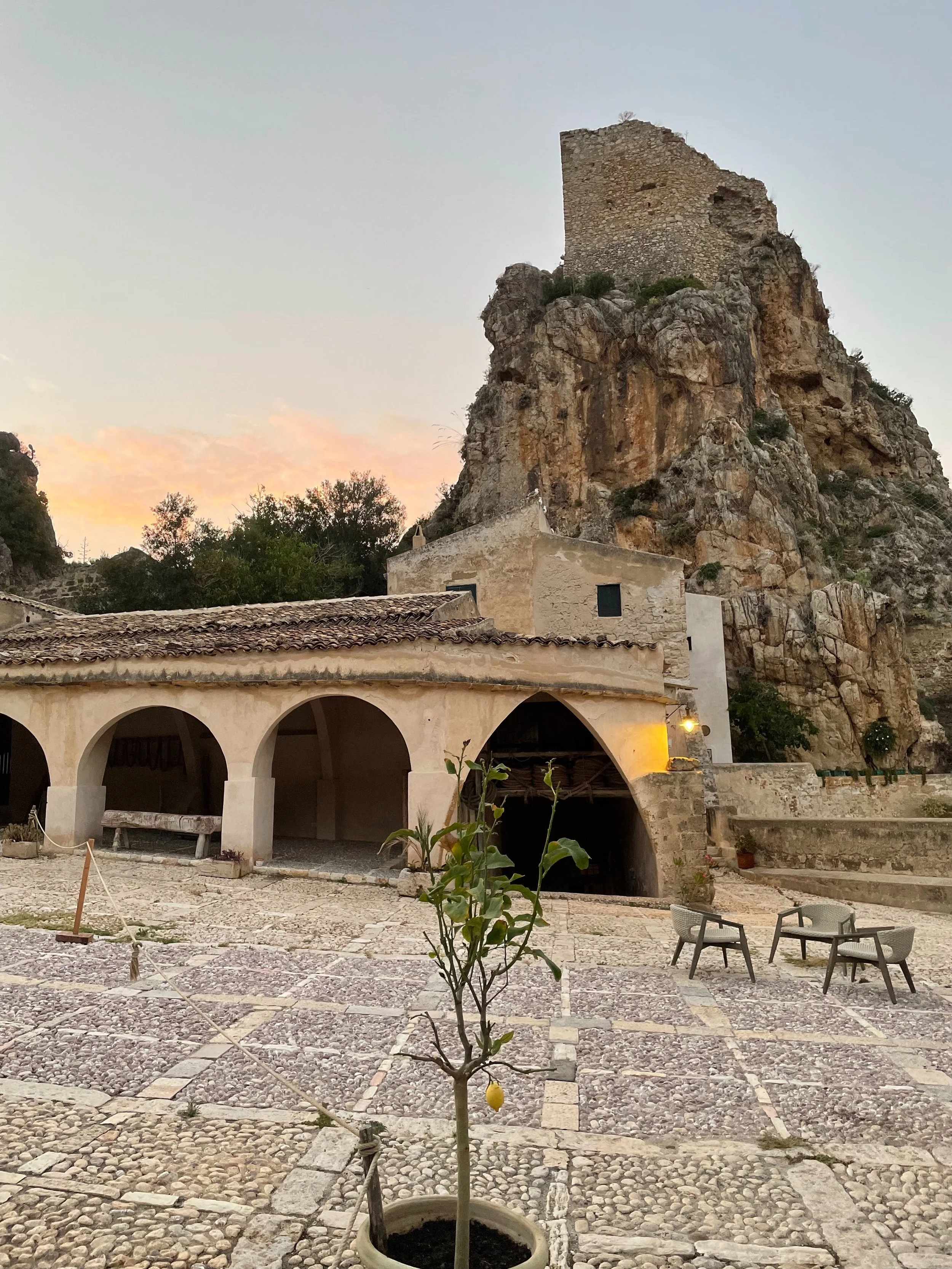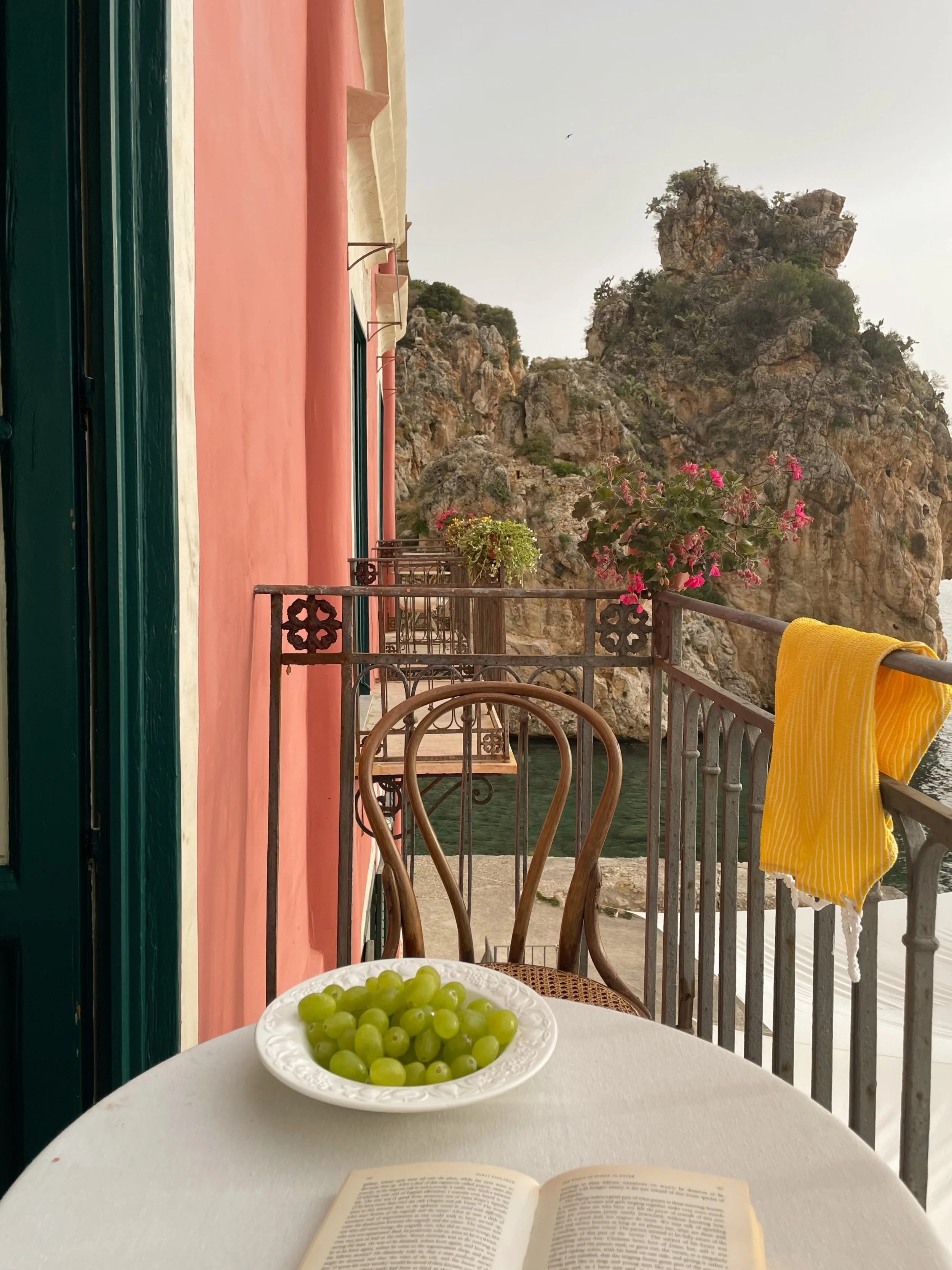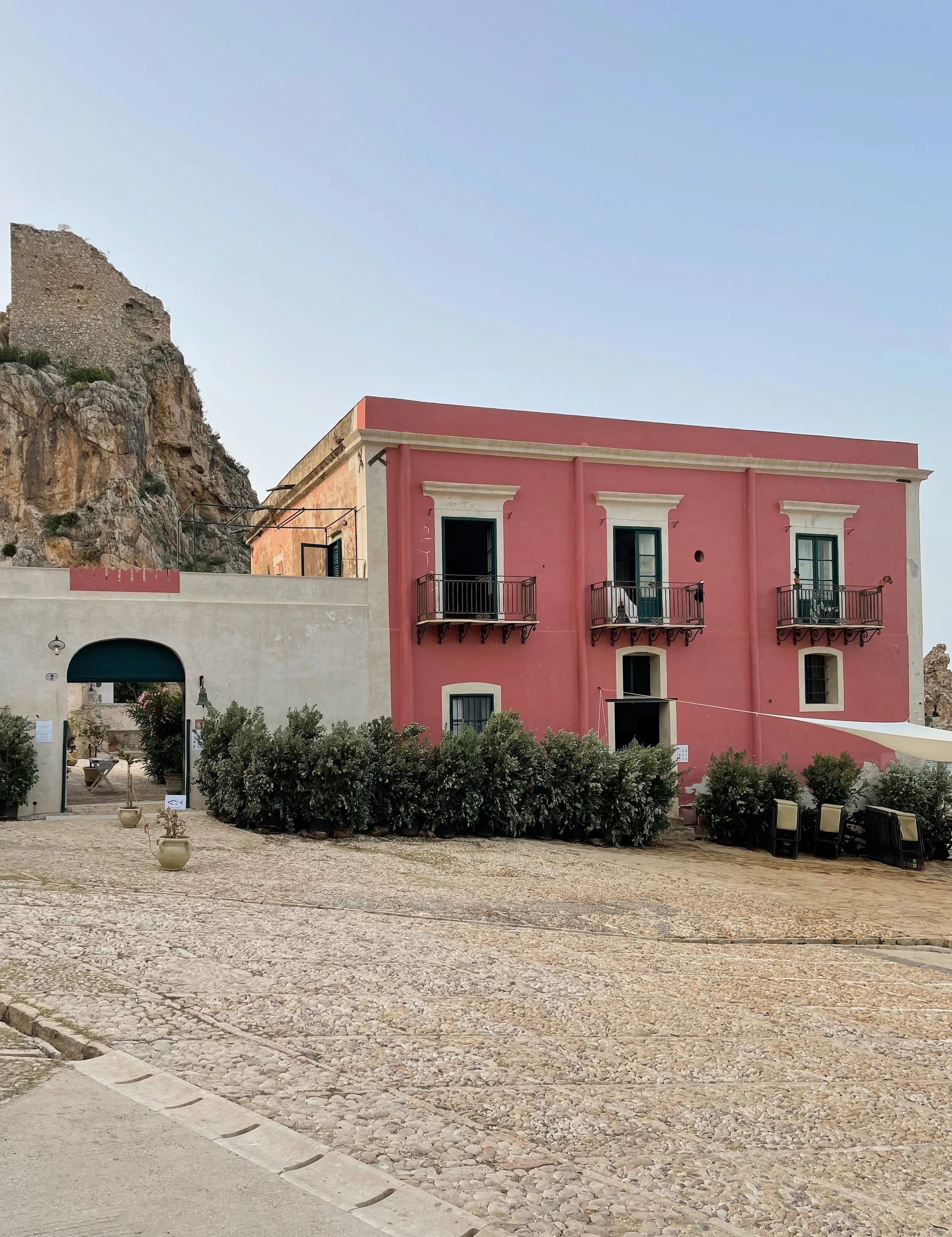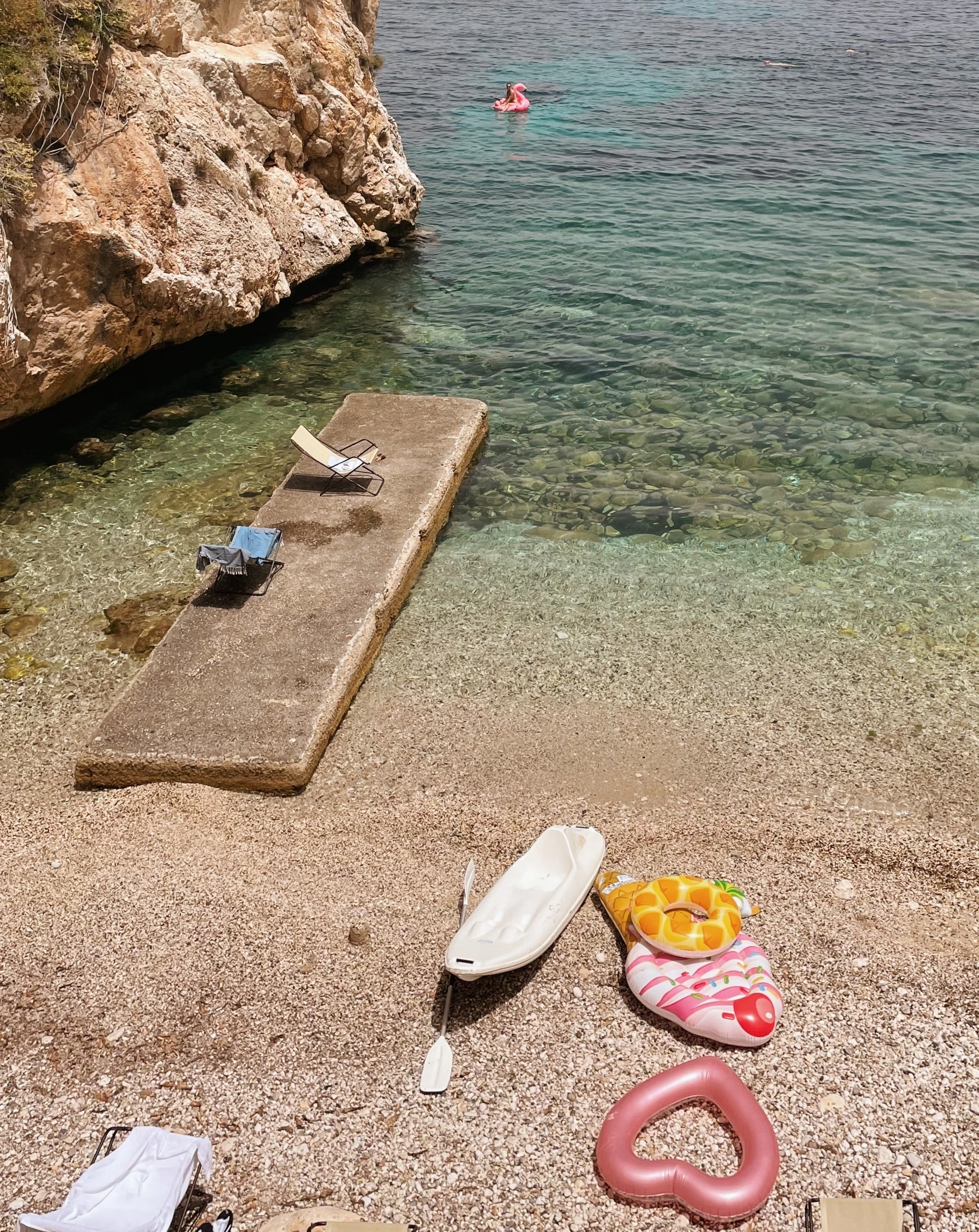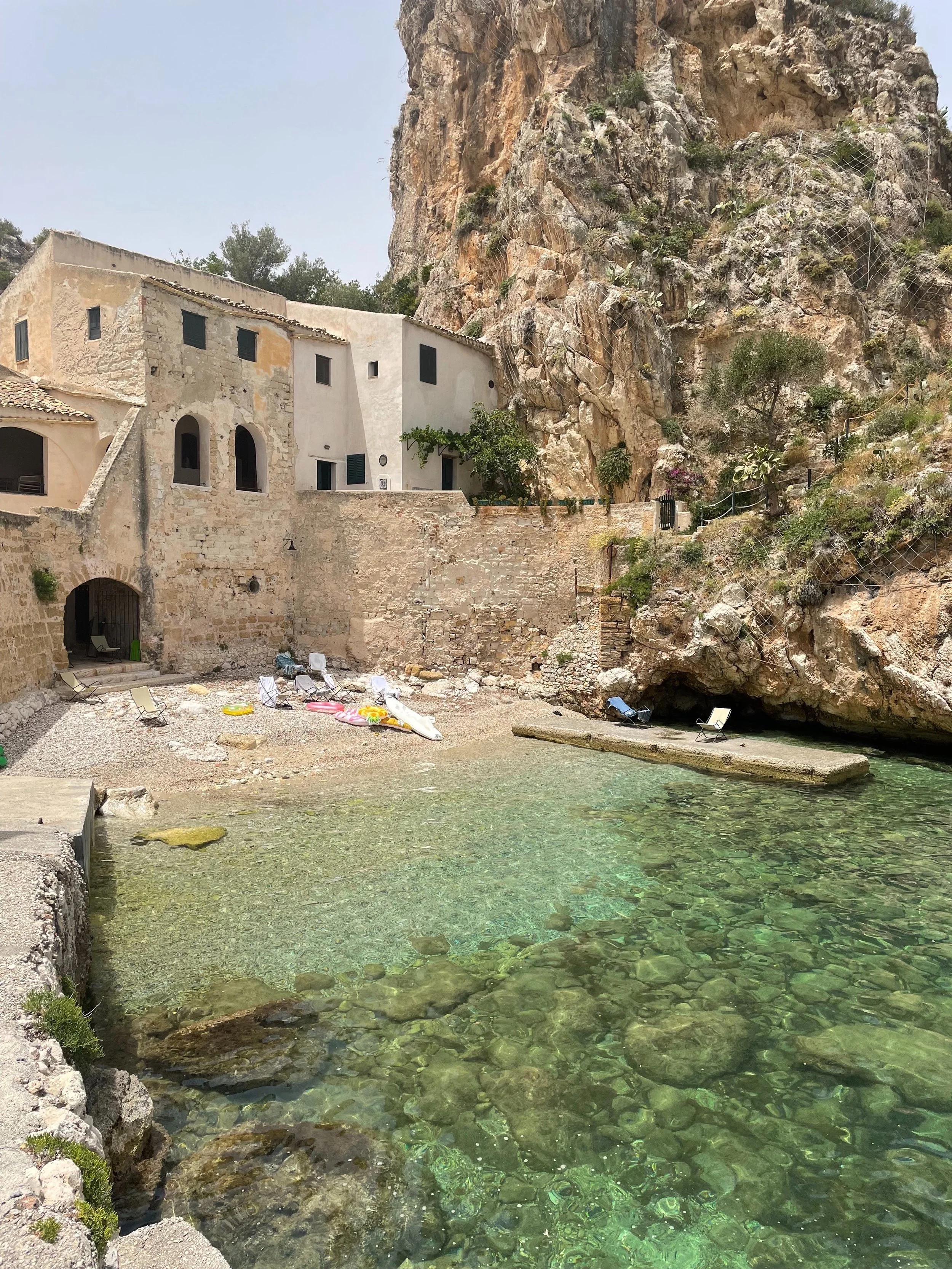Travel diaries: Tonnara di Scopello by Valentina Barabuffi
Sicily scented with sun and salt is what I have before my eyes as I write from the terrace of the Palazzina Florio della Tonnara di Scopello.
The waves of the sea crashing on the steep stacks are the soundtrack that keeps me company in the silence of Tonnara now that the sun has gone down and the people with beach towels, laughter and crosswords are gone.
Scopello is located halfway between Palermo and Trapani, each approximately forty minutes away. With my family we landed in Palermo and from there we rented a rental car. The Tonnara di Scopello overlooks an inlet surrounded by nature and crystal clear waters that tell the stories of fishermen. Inside the Museum you can examine the tools necessary for tuna fishing, the warehouses that still house the original fishing boats and the buildings where tuna was processed. It is one of the oldest and best preserved “traps” among the many existing in the whole region, its activity continued until 1984. The old fishermen´s houses have been modified to be able to stay there, respecting the place and the history, and for this reason they do not have the usual “hotel” comforts such as air conditioning, TV or a telephone line.
The apartment I chose for the stay is located inside the Palazzina Florio, originally the manor house where the administrator of the Tonnara lived. The windows overlook the bay and, at any moment, you seem to hear the “cialoma”, the proprietary song of the fishermen who went out to sea.
The other apartments are inside the Le Vicarie and Vecchia Administration buildings. Le Vicaire are lodgings outside the beam, once it housed the fishermen gods and the house of the Rais (the most important figure inside the Tonnara). The Old Administration building is located under the medieval tower and is the oldest part of the Tonnara. The house housed the guards of the Rais boat, the muciara, always ready to lead the Rais if necessary from the trap to the sea.
At the Tonnara time slows down, with long baths, books to read and lunches overlooking the sea. The specialty of the place is “pane cunzato”, produced in an old oven and seasoned with anchovies, first salt cheese, oil and tomato. And then, being in Sicily, sweets cannot be missing. Granites, cannoli and the typical “cassatella”, a specialty of the Easter period, now prepared all year round.
One evening we visited the village of Scopello which is really very small and was born around an ancient beam. For dinner we chose the Nettuno Bar where you can eat fresh fish on a small terrace overlooking the sea.
Very close there is the Riserva dello Zingaro. A path surrounded by nature from San Vito Lo Capo to Castellamare del Golfo. An ups and downs of the coast, between the green of the vegetation and the blue-white transparencies of the coves that can only be reached on foot or by boat.
Even if you do not stay at the Tonnara it is possible to take a bath in its always calm waters. For the public there is a space with deckchairs outside the beam while those who stay there can take advantage of the private beach right under the imposing stacks.
La Tonnara di Scopello is a timeless place. Its beauty is simplicity. You fall asleep with the sound of the waves and wake up with the light of the sun filtering through the embroideries of the ancient curtains.
A special thanks goes to those who guard this place with wisdom and kindness, preserving its soul and beauty.

